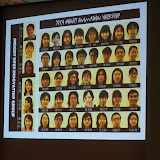 BY Suhas Sreedhar // May 2009
BY Suhas Sreedhar // May 2009Last October, the hopes and dreams of an entire nation’s industry rested on the success of a movie romance between two dogs. The feature-length film, called Roadside Romeo and made entirely by Indians for Indians, was supposed to be a watershed moment for Indian animation.
The goal of Romeo’s producers was nothing short of winning over Indian moviegoers for the sake of the entire animation genre, which had never found mainstream success in India before. It was a project full of big players and even bigger ambitions. Conceived by famed Bollywood producer Yash Raj Chopra and executed by Tata Elxsi’s Visual Computing Labs (a division of the Tata Group), the movie was coproduced with Walt Disney Pictures and featured the voice talents of Bollywood idols Saif Ali Khan and Kareena Kapoor.
The film was supposed to succeed where other animated movies—including the Indian runs of blockbusters like Wall-E —had not. Roadside Romeo was essentially a Bollywood tale (albeit one dressed up in animated skins) replete with song and dance numbers, action scenes, classical villains, and a tried-and-true Bollywood pulp story line. Debuting the film at the height of Diwali, a major festival in India, Romeo’s producers were determined to capture the hearts of revelers. But the movie failed.
The film didn’t even sell in markets where animation flourishes, including North America, where it was only the second Bollywood film ever released by an American studio. According to Box Office Mojo, the film grossed an anemic US $1.6 million worldwide, falling far short of its frugal $7 million budget. It did do better outside of India than within; only 3.5 percent of its grosses were domestic. It also failed in ways other than financial—the reviews were average at best.
Insiders within India’s wildly successful computer-graphics production industry—it’s on track to reach a billion dollars in revenue by 2012 according to projections by India’s National Association of Software and Services Companies—are hoping that Romeo isn’t a harbinger for Indian animated feature films. According to Pankaj Khandpur, creative director of Visual Computing Labs, around a hundred computer-graphics films were greenlit after Romeo was first announced. Are these movies destined to share its fate?
One industry titan, Veerendra Patil, worries that they might. In the eight short years since its founding, his company, Paprikaas Interactive Services, has won such high-profile accounts as Nickelodeon, Sony Computer Entertainment, Microsoft, and Electronic Arts, and formed a partnership with U.S. powerhouse DreamWorks Animation. But Paprikaas doesn’t have any plans to create original films for the domestic market, and Patil, the company’s creative director, is bluntly outspoken when explaining why. ”Often there’s very little discipline in [making a Bollywood movie]. The investors don’t understand the budget, process, and time required. The script constantly changes; they often don’t storyboard. A lot of younger directors are better. But things still have to improve.”
In the meantime, the execs at Paprikaas aren’t just content to remain a service company. According to Patil, their goal is eventually to make original content and become a full studio for animation—but with an international audience in mind. The key word, apparently, is eventually . Paprikaas plans to make a single original animated short within the next year or so to be submitted to various film festivals worldwide.
And feature films? ”That’s still several years away. But the first one would be an external idea,” Patil says, which means that Paprikaas’s role would be similar to Tata Elxsi’s for Romeo . The difference, though, is that Paprikaas only wants something that has broad, international appeal and would ensure good schedules, discipline, and quality. When asked whether he feels any pressure to showcase Indian culture in the films Paprikaas produces, Patil calmly shakes his head. ”We want to make sure it’s universally appealing, executed well, and has a good story line.” Then he adds, ”We’ll go with the best idea we can come up with.”
In the meantime, the company is focused on technical improvements that make animation production faster and more efficient through what it calls ”pipeline process management.” It’s also creating its own software packages and plug-ins for Autodesk’s Maya and 3D Studio Max and eventually plans to develop its own proprietary software, as Pixar Animation Studios and DreamWorks have done.
Looking to the future of animated technology, Patil says that ”for a long time the focus has been on photo-realistic rendering. You have an object in real life, and you try to create one on the computer that looks exactly like it. That’s more or less possible now, so I think the next step is to explore non-photo-realistic rendering, with things like ”toon shading” (making a three-dimensional object look two-dimensional) that will allow us to break more creative boundaries visually.” This style of animation has already been used in several video games, including Nintendo’s The Legend of Zelda: The Wind Waker , Capcom’s Okami , and Ubisoft’s Prince of Persia .
But what about the dream of Indian animated feature films for Indian audiences? Paprikaas’s CEO, Nandish Domlur, is hopeful, stating that while most Indians haven’t yet taken to the animated genre in film or TV, the spread of personal computers has opened up some interesting opportunities for low-cost online video games and shorts, areas that Paprikaas is already exploring through partnerships with Electronic Arts and others.
Patil adds that while Paprikaas will always remain a service company for visual effects and gaming, he could see it expanding into special effects for live-action Bollywood films, perhaps a stepping-stone to doing an end-to-end film. Until then, Paprikaas will continue to try to learn and grow, as will the rest of the animation industry.
India certainly isn’t ready to become the next Korea or Japan for animation, but Patil, like his boss, remains hopeful. ”I think right now [we at Paprikaas] are among the best in the world in terms of technical skills. And I hope that there will be more companies like us in India, even if that means direct competition, because it would indicate that we’re growing culturally and creatively throughout the country. Overall, I think there’s a fantastic future for Indian animation. We’re quick learners with inherent discipline. To begin with, it’s our strength. But we need to break [cultural] barriers and become more freethinking.”
About the Author
Suhas Sreedhar is a freelance journalist who has previously written for IEEE Spectrum about the future of music. He recently did some blogging and webcasting while working as the assistant director of the Center for Science Writings at the Stevens Institute of Technology, in Hoboken, N.J.
Source: http://www.spectrum.ieee.org/computing/software/animation-nation-part-ii-bollywood-sets-its-sights-on-feature-films/0

















沒有留言:
張貼留言